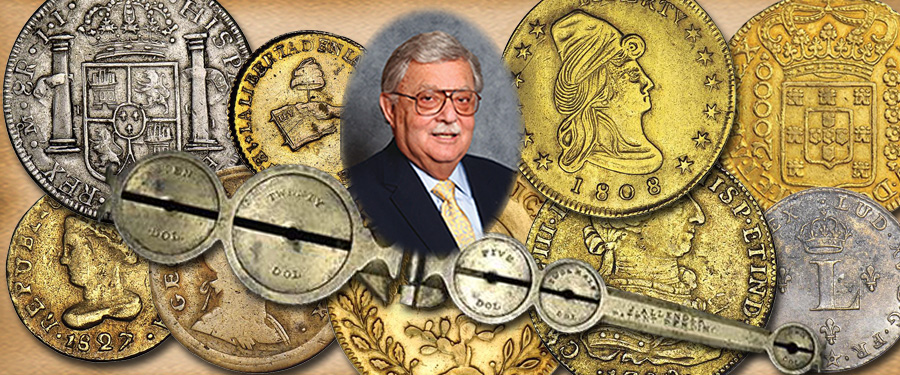
In the early days after World War II, as counterfeit coins were being made and entering the country, the Secret Service started confiscating and seizing false gold coins found in jewelry shops, pawn shops and even at some coin dealerships.
The agents went into shops, pretended to be buyers, asked what was available, and checked what they saw. If they felt something was a counterfeit they seized it, issued a pink slip as a receipt and took the items either to a qualified coin dealer or back to headquarters. Those who were selling counterfeits, even if the seller believed they were genuine, were indicted and received jail time as well as big fines.
During the 1950s counterfeit gold coins continued to flood the U.S. markets as well as world markets. Near the end of the 1950s the quantity was so great that Congress authorized the establishment of the Office of Gold and Silver Operations (OGSO) intensifying the confiscation of false gold coins. In fact, as the flow increased, President Kennedy authorized the office to institute regulations for licensing of all gold coin imports. In order to import any gold coin, one had to apply for an import license. After the license was received, one could request the import be sent and then the packages were open and compared to the license, counterfeits were removed and then the item could be imported. For all this to happen, the coins had to be genuine, they had to be considered rare and unusual by the Office, and only those that “qualified” according to the regulations were licensed.
The procedure was burdensome and difficult to adhere to, and the import of gold coins was slowed considerably. Actually, smuggling became quite common.
The main trouble was there was no list of what could be imported or what would be denied; the OGSO ruled individually on each coin that a license was to be issued for.
Most professional dealers, who needed to import gold coins, complied with difficulty, applying to get a license for each coin, and/or collection they wished to import. This procedure could be virtually impossible.
I offer one example to illustrate how this affected us at Stack’s. In 1963, a good client and friend of the firm, living in The Netherlands, decided he had to sell his collection, and move to a place like Arizona, for his health. He sent us a list of some 925 different gold coins of the world that he wanted to sell. He understood import and export regulations so he permitted us to apply using his list for the application. The major portion of the coins were of a classic nature, including ducats from the medieval era and choice and rare coins of the 17th, 18th, 19th and early 20th centuries. It would be a major collection for us to offer.
We took the list, filed it with the office in Washington and waited for a reply. After a month’s time we inquired again and were advised it would be forthcoming. I had planned a trip to Europe to take place about two months after filing for the license, so that I could help our client pack and ship the coins to the United States. Thinking approval was imminent I left for Europe, calling my cousin Norman every day to see if the license had arrived. I stayed for over two weeks in Europe waiting for reply but none was received. The client said he would wait so he could sell the coins in America. About two months after my return, one of our foreign experts went to Europe in the hopes of assisting the client as soon as the license was received. After remaining in Europe for three weeks, the license had still not arrived and the expert came home.
A year or so after we filed for the license, we received one, but not for the full collection. The license omitted over 150 coins from the 925 in the collection. No reason was given, no explanation for what had qualified for licensing and what had not. The client was someone who took great pride in his collection and he told us: “I will not break up my collection. It traces world gold monetary history and since it tells that story, the removal of any would disturb the completeness I strove for. Please apply for the rejected ones and I will wait awhile.”
This was a very generous offer from the client. In my next article, I will relate what happened next regarding this collection.





